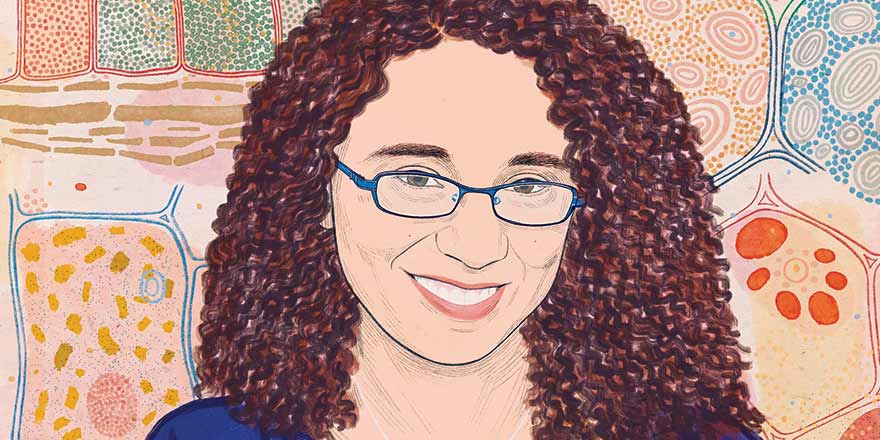
Bronxville is touted for its proximity to Manhattan, but Michelle Hersh is grateful for Sarah Lawrence’s easy access to the Hudson River, where a rich ecosystem serves as an extension of her on-campus lab. Michelle is a community ecologist looking at the ways different species interact and the mechanisms maintaining biodiversity. Students play an active role in her research on plant diseases, both in her lab and classes like “Environmental Metagenomics.”
SLC classes are dependent on not only what I bring to the table, but what all of the students bring, as well. Every time I teach a class it’s unique, because student perspectives shape our seminar discussions. Students are working collaboratively, whether they’re culturing bacteria or measuring trees at a nature preserve.
Students are involved in every aspect of my work, from field work to high-throughput DNA sequencing to statistical analyses. When I teach “Ecology,” I take students to collect data in parks and field stations all over the county: We catch fish in the Hudson River, measure and identify trees, and find insects and salamanders in streams. The labs are designed to give the students the tools they need to design and carry out their own field experiment for their conference work.
Some students use journal articles to research a topic they are excited about. Others will design and carry out an experiment in my lab, often involving fungi, bacteria, or other microorganisms. I’ve also had short stories, plays, films, art projects … you name it.
A student in “Global Change Biology” made a fabric out of bacteria from a kombucha scoby. One student in my “Symbiosis” course wrote a story about humans getting infected by Cordyceps fungi, the so-called “zombie ant fungus.” Someone in my “Evolutionary Biology” course is writing fictionalized accounts of how dragons might evolve from flying snakes and bats. Some memorable experiments include sampling bacterial communities from the soils on campus green roofs and testing soils from community gardens in Yonkers.
The environmental problems we are facing are not going to be solved by science alone. We need to look at policy, economics, and social impacts. And we need to change hearts and minds to involve the general public. Everyone has an important role to play from their own personal choices, to work in science, in policy and education, or through the influence of the creative and performing arts.
Illustration by Anna Higgie
The environmental problems we are facing are not going to be solved by science alone.